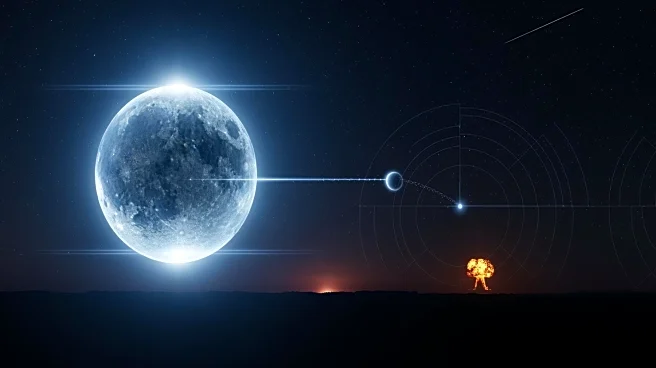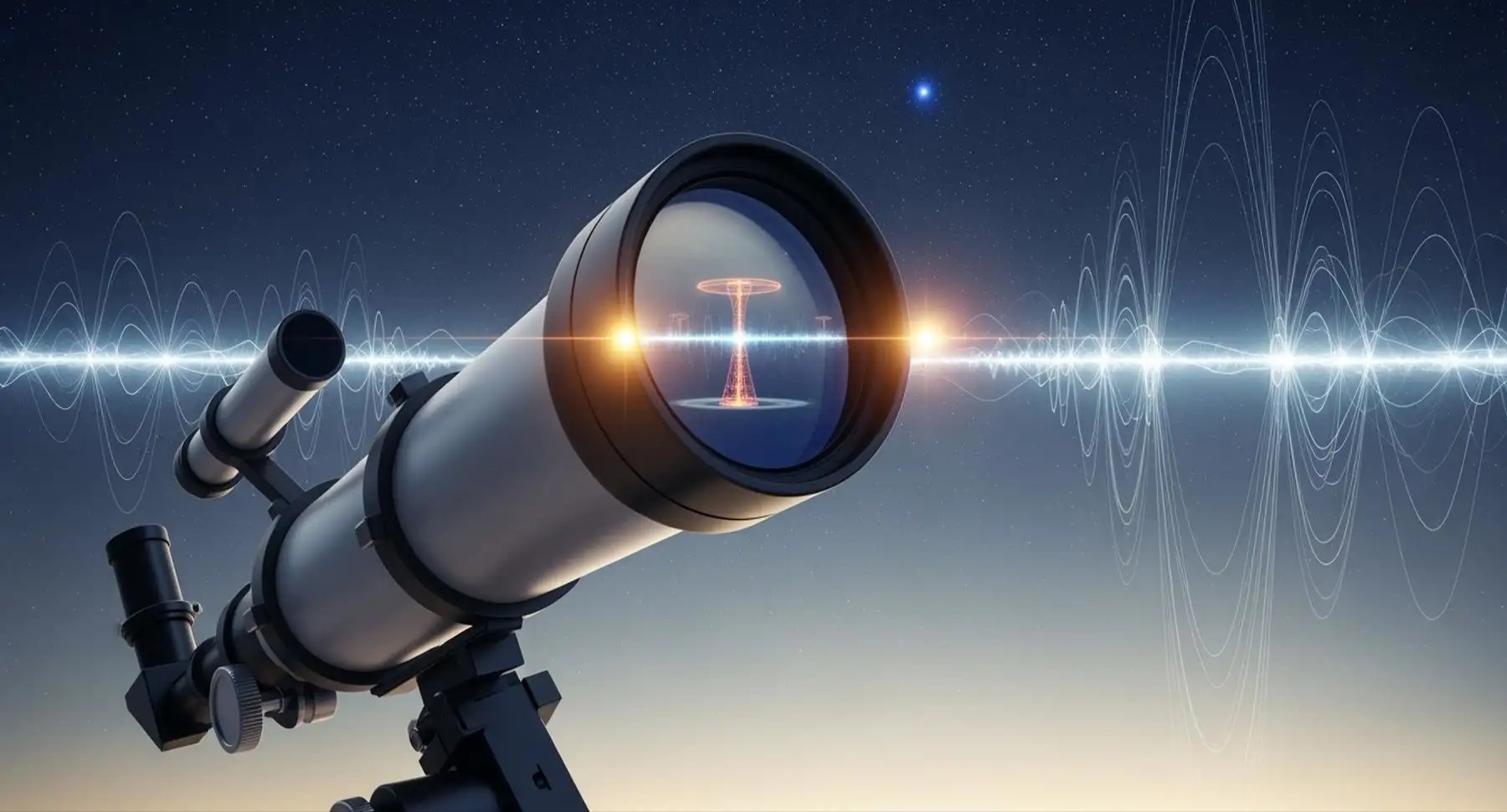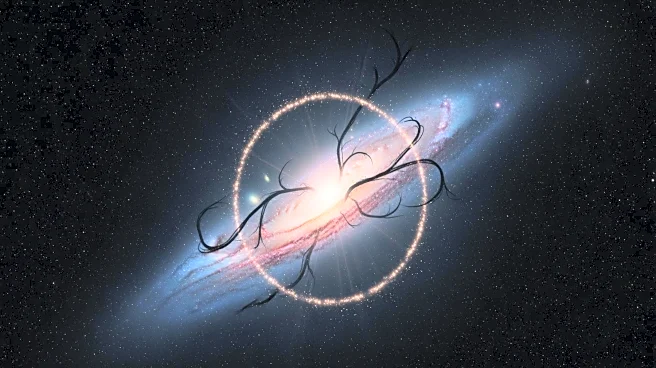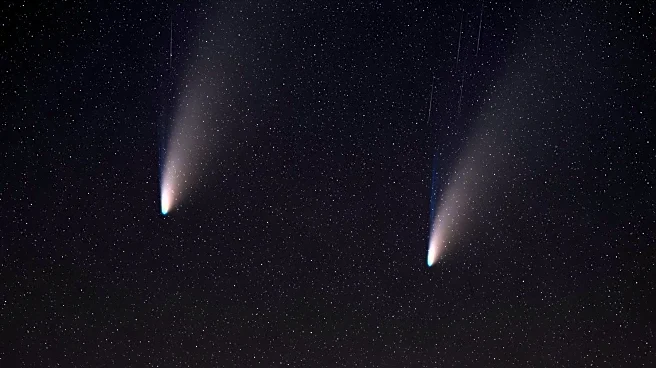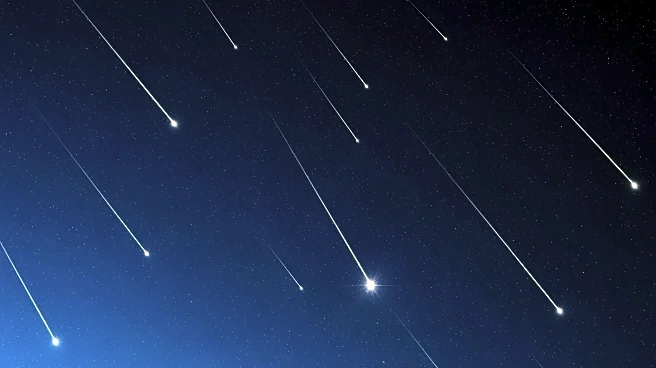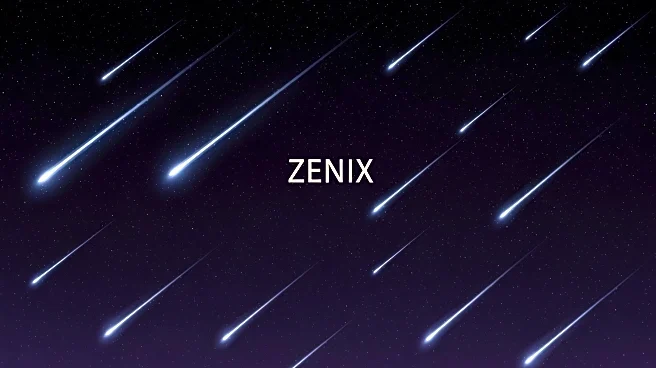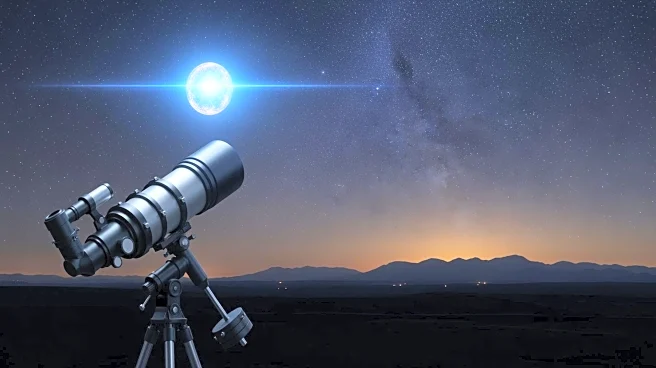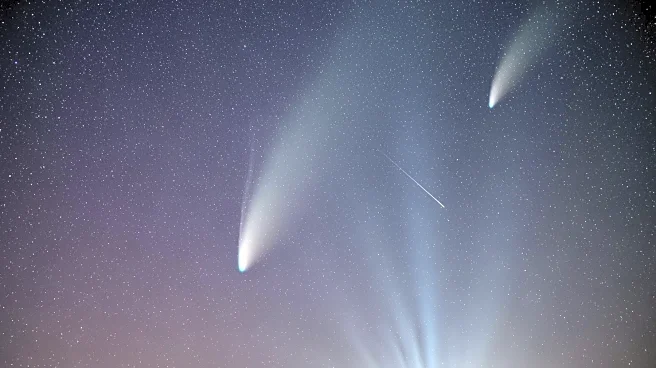What's Happening?
A study has found statistical associations between short-lived star-like transients observed in the Palomar Observatory Sky Survey (POSS-I) and both nuclear weapons testing and reports of unidentified
anomalous phenomena (UAP). The research suggests that transients were more likely to occur within a day of nuclear tests and were also correlated with UAP sightings. This study provides preliminary evidence of potential links between these phenomena, although the exact nature and cause of the transients remain unknown.
Why It's Important?
The findings could have implications for understanding the nature of transients and their potential connection to nuclear activities and UAPs. If transients are linked to nuclear testing, it could suggest new atmospheric or space phenomena triggered by such events. The study also contributes to the scientific investigation of UAPs, a topic of increasing interest and debate. Understanding these associations could lead to new insights into both natural and potentially artificial phenomena observed in the sky.
Beyond the Headlines
The study challenges conventional explanations for transients, such as photographic defects, by showing their correlation with external events like nuclear tests. It also raises questions about the potential for undiscovered atmospheric or space phenomena that could be responsible for these observations. The research highlights the need for further investigation into the causes of transients and their possible implications for both scientific understanding and public policy regarding nuclear testing and UAPs.
